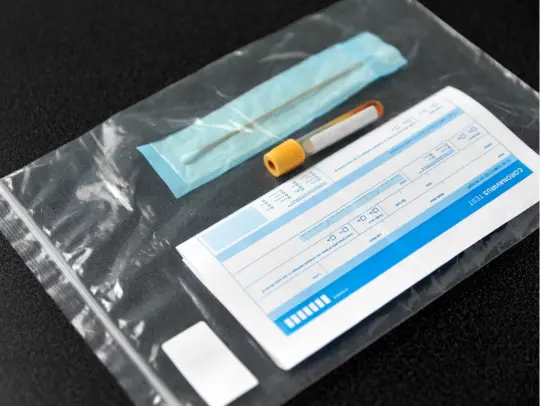
Botox for Erectile Dysfunction: An Emerging Treatment Option
Botox Injections for ED: Emerging Treatment Option Explained
Introduction: A New Application for a Familiar Treatment
Botox, widely recognized for its cosmetic applications in reducing facial wrinkles, is now being explored for a surprising new medical use: treating erectile dysfunction (ED). This innovative application represents a significant shift from Botox's conventional role and offers potential hope for men who haven't responded well to traditional ED treatments.
Erectile dysfunction affects millions of men worldwide, with profound impacts on quality of life, relationships, and psychological well-being. While medications like Viagra (sildenafil) and Cialis (tadalafil) have revolutionized ED treatment since their introduction, they don't work effectively for all patients. This treatment gap has motivated researchers to investigate alternative approaches, including the use of Botulinum toxin, commonly known as Botox.
Understanding the Mechanism
How Does Botox Work for ED?
The proposed mechanism for Botox in treating erectile dysfunction relies on the same fundamental property that makes it effective for cosmetic purposes: its ability to relax muscles. When injected into specific areas of the penis, Botox may relax certain smooth muscle tissues, potentially enhancing blood flow to the corpus cavernosum—the spongy tissue that fills with blood during an erection.
More specifically, Botox is thought to inhibit the release of norepinephrine, a neurotransmitter that causes smooth muscle contraction in the penis. By reducing this contractile activity, Botox might promote vasodilation and increased blood flow, facilitating the erectile process.
For men whose ED stems from excessive contraction of penile smooth muscles or hyperactivity of the sympathetic nervous system, this targeted muscle relaxation could theoretically improve erectile function without affecting other bodily systems.
Current Research Status
What Does the Science Say?
Research into Botox for erectile dysfunction is still in its early stages, with most studies involving relatively small patient populations. However, preliminary results have shown promise:
Several small-scale clinical trials have reported improvements in erectile function following intracavernosal Botox injections. In these studies, a significant percentage of participants experienced better-quality erections and improved sexual satisfaction after treatment.
One pilot study published in the Journal of Sexual Medicine found that men who received Botox injections showed improvements in penile hemodynamics (blood flow patterns) and reported subjective enhancements in erectile function that lasted several months.
It's important to note that most of these studies have been preliminary in nature, with limited sample sizes and relatively short follow-up periods. Larger, more rigorous clinical trials are needed to conclusively establish the efficacy, optimal dosing, and long-term safety of this approach.
Safety Considerations
Potential Risks and Side Effects
As with any medical treatment, safety is a paramount concern when considering Botox for ED. While Botox has a well-established safety profile for its approved uses, its application for erectile dysfunction introduces unique considerations.
Potential side effects reported in early studies include:
- Pain or discomfort at the injection site
- Bruising or swelling
- Risk of penile fibrosis (formation of scar tissue)
- Theoretical risk of priapism (prolonged erection requiring medical intervention)
- Potential systemic effects if the toxin spreads beyond the injection site
These risks must be carefully weighed against potential benefits, particularly given the sensitive nature of the treatment area. Additionally, the long-term effects of repeated Botox injections in penile tissue remain unknown, underscoring the need for extended follow-up in future research.
Comparison with Traditional Treatments
How Does Botox Stack Up Against Established ED Therapies?
When evaluating any new treatment, it's essential to consider how it compares to existing options. Currently, first-line treatments for ED include:
- Oral phosphodiesterase type 5 (PDE5) inhibitors (Viagra, Cialis, Levitra)
- Vacuum erection devices
- Penile injections of vasodilators (e.g., alprostadil)
- Penile implants (for severe cases)
Botox may offer several theoretical advantages over these treatments:
- Potentially longer-lasting effects than oral medications (possibly several months per treatment)
- Mechanism of action that might help patients who don't respond to PDE5 inhibitors
- Less invasive than surgical implants
- Possibly fewer systemic side effects than oral medications
However, without direct comparative studies, it remains unclear whether Botox provides superior efficacy or safety compared to established treatments. Current evidence suggests it might be most valuable as a complementary option for men who haven't responded adequately to conventional therapies.
Future Research Directions
What's Next for Botox and ED?
For Botox to become a mainstream treatment option for erectile dysfunction, several research milestones must be achieved:
- Larger clinical trials: Studies with hundreds of patients, rather than dozens, are needed to establish efficacy across diverse populations.
- Longer follow-up periods: Research tracking outcomes over years, not just months, will help assess long-term safety and durability of response.
- Optimization of treatment protocols: Determining ideal dosing, injection techniques, and retreatment intervals will be crucial for maximizing benefits while minimizing risks.
- Identifying ideal candidates: Understanding which subgroups of ED patients are most likely to benefit from Botox therapy could help target this treatment more effectively.
- Direct comparisons with established treatments: Head-to-head trials comparing Botox with PDE5 inhibitors and other therapies will clarify its relative efficacy and place in treatment algorithms.
This research agenda represents a significant undertaking, likely requiring years of coordinated effort across multiple research centers.
Practical Considerations for Patients and Providers
Is Botox for ED Ready for Prime Time?
At present, the use of Botox for erectile dysfunction remains largely experimental and is not FDA-approved for this indication. Men interested in this approach should understand several important points:
- Treatment would likely be considered "off-label" use of Botox
- Insurance coverage may be limited or nonexistent
- Finding providers with experience in this specific application might be challenging
- The optimal treatment protocol has not yet been standardized
For healthcare providers, offering Botox for ED would require specialized training in penile injection techniques, thorough knowledge of penile anatomy, and careful patient selection. A comprehensive informed consent process would be essential, given the experimental nature of this treatment.
DHEA Testosterone
Daily LowT Supplement
Andro-Free DHEA formula, Tribulus, Tongkat Ali and complete prostate complex. Improving testosterone levels may enhance insulin and weight loss.Your Price BUY NOW!
Coupon automatically added to your cart
Low testosterone levels lead to a variety of health issues.
Hair loss: Its interesting to note that low testosterone and high DHT levels coexist, making life difficult for your hair follicles.
Low sex drive: It is unreasonable to anticipate having a successful sexual encounter if you lack even one of the vital components contributing to your sexual drive.
Erectile dysfunction: Your inability to perform sexually, even when youre in the mood for it, could result from a low sex drive, which can contribute to erectile dysfunction.
Conclusion: Promise and Perspective
Botox for erectile dysfunction represents an intriguing frontier in men's sexual health treatment. The preliminary research offers reason for cautious optimism, particularly for men who haven't found success with conventional therapies.
However, both patients and healthcare providers should maintain a balanced perspective. The current evidence base, while promising, is still developing. Larger studies with longer follow-up periods are essential before this approach can be broadly recommended.
For men struggling with ED who are interested in this option, the best approach is to:
- Discuss the current evidence with a urologist or sexual medicine specialist
- Consider participation in clinical trials, if available
- Explore all established treatment options before pursuing experimental approaches
- Stay informed about emerging research in this rapidly evolving field
The exploration of Botox for erectile dysfunction highlights the ongoing innovation in sexual medicine and offers hope that the treatment arsenal for this common condition will continue to expand, providing more options for men to maintain sexual health throughout their lives.




































































































































